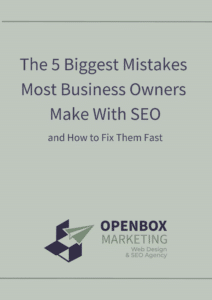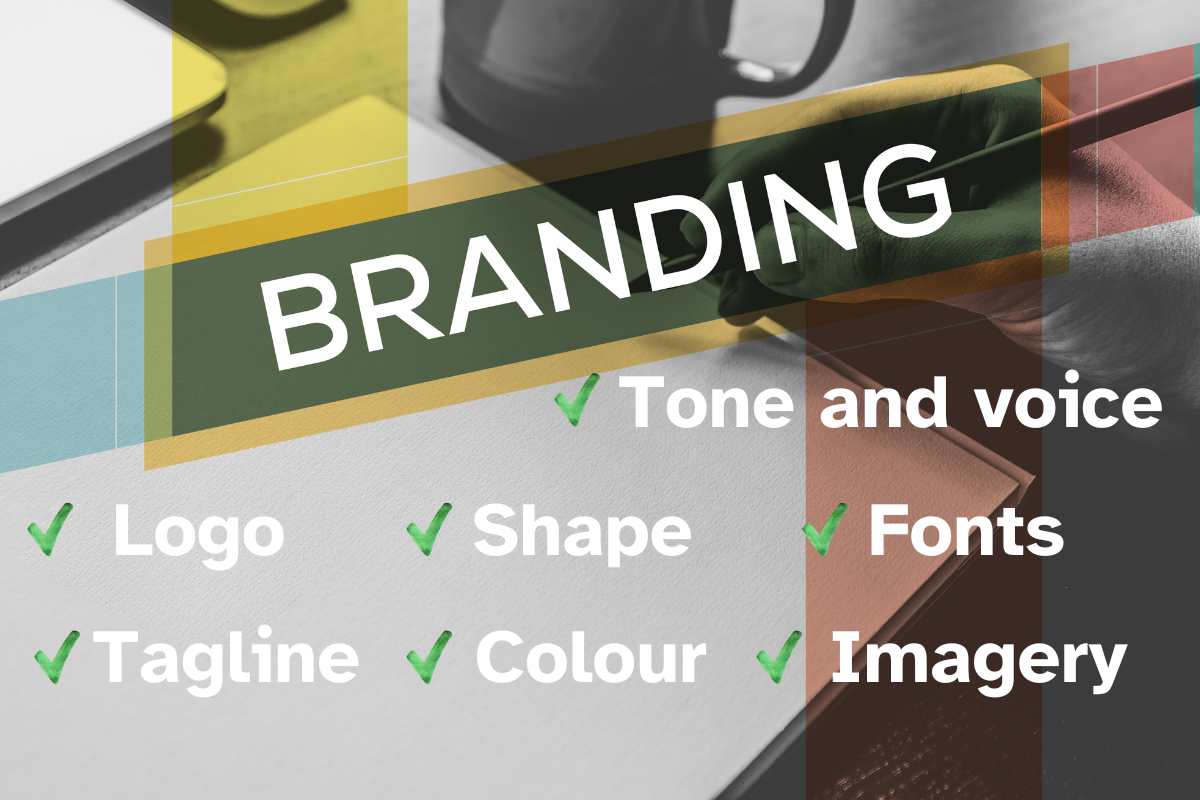Don't let SEO mistakes hinder your business's online success. Download our FREE guide today and unlock the strategies to optimise your visibility and avoid common pitfalls. Take charge and get your guide now!

Your identity makes you unique and sets you apart from all the other people in the world. On the same note, your brand identity is the asset that differentiates your business from others.
In this article, we explore how mastering the art of effective branding and brand identity can help your business grow and stand out in your industry and market.
What is Brand Identity?

Brand identity, an essential factor of a brand strategy, encompasses the unique features that determine its perceived appearance and personality. These features include tangible and intangible elements from name to history and values.
What are Brand Design Elements?
Creating a brand identity is a process that must include those characteristics that express who your brand is, who it is for and what it has to offer, also known as a brand design package or elements.
Logo
The logo is what the brand is about; its whole personality is captured in a memorable image. It represents, more often than not, the first interaction between potential customers and your brand. It is vital that the logo stays in their mind and triggers memories the next time the customers come across it.
The logo is included in almost every element of your brand, from your website and social media page to products, business cards and advertising materials, so it is crucial to have a logo that reflects the core of your brand identity.
Tagline
The tagline provides supplementary information and context to your logo, telling people what to expect from your brand. It is how your brand communicates with its audience, and it needs to be unique, catchy and memorable so the audience can differentiate it from all other brands.
Nike’s “Just do it” campaign, for instance, as simplistic as it may seem, conveys a powerful message – take action, a message that the audience keeps in mind.
Shape
Shape refers to all the shapes you use in your brand’s assets. When designing your brand identity, you must choose the shape (or shapes) that align with the brand’s identity, personality and values.
You need to ensure these shapes are present in your packaging, website, social media posts and all stationery so they become another distinctive element of your brand.
Colour
The colour (or colours) you use for building your brand’s identity makes your brand easy to identify by its audience. If a consumer can determine your brand by seeing its colour scheme, the purpose is achieved. The colour is relevant for consumers because each colour expresses personality features and values that consumers can relate to.
To some companies, colours have become so embedded in their brand’s identity that they have registered them as trademarks – think, for example, about Cadbury’s purple.

Fonts
The fonts you use in all your written communication, logo, or website must also communicate the brand’s personality.
Decide on your fonts after careful consideration so they become an additional element that sets your brand apart from others and makes it identifiable by consumers. For a professional image, check that all the content connected to your brand uses the same fonts.
Tone and voice
Tone and voice refer to how you communicate with your target audience, from blog articles to emails, website pages and social media posts. They must be written from the values and personality of your brand so all communications reflect the essence of the brand.
Imagery
Imagery includes all the images, photos and graphics you use in your marketing, branding and advertising efforts when creating and developing your brand’s identity.
Imagery goes beyond traditional visuals as abstract patterns and images are another way to communicate a brand’s personality and values to its audience.
What is in a Brand Design Package?
A brand design package, or brand identity package, includes the resources that build your brand’s image. These resources convey the brand’s message and help define a relationship of trust with the consumers.
A brand design package usually includes a logo, a visual identity and a style guide.
A style guide (or branding standards document) is like a detailed guide that helps define a clear brand experience for consumers. It provides all those representing the brand with the information they need to create a consistent brand image. It also contributes to establishing the visual direction of the branding efforts and strategy.
What is an Example of Brand Strategy?
Brands are successful when they apply consistent, aligned-with-their-goals brand strategies. A brand strategy defines how the brand approaches the market and the tools it uses to reach its objectives.
An example of a successful brand strategy is how Old Spice reinvigorated its ageing brand by letting go of its history.
Old Spice had the image of a brand for older men, and to stay in the market, it needed to find a way to attract a segment of younger consumers.
The first step was a humour-powered campaign called Swager, and once its results were in, the brand went all the way and designed the viral success campaign The Man Your Man Can Smell Like. It became the number one brand in the men’s body wash market by changing its visual identity and established personality.

What are the 7 Key Elements of Brand Strategy?
A significant and memorable brand results from a thoroughly designed, impeccably executed plan that establishes a trustworthy, durable, and relevant connection with a target audience.
The 7 Key Elements of Brand Strategy are:
Understand your target audience
Understanding your target audience’s needs, desires, pain points, likes, and dislikes allows you to create and deliver a compelling, consumer-customised brand message. This turns your brand into a meaningful, leads-generating one which enables your business to grow.
Imagery goes beyond traditional visuals as abstract patterns and images are another way to communicate a brand’s personality and values to its audience.
Create an engaging brand identity
Your brand’s identity is its defining trait; the element consumers associate with your products and services. An engaging brand identity entails defining its mission, values, vision and personality to create an emotions-sensitive relationship with consumers.
Define a distinctive positioning of your brand
A distinctive positioning represents a statement that communicates what differentiates your brand from others and provides the consumers with the reasons to choose your brand and not your competitors. This positioning must indicate the unique element your brand brings to your industry.
Create a convincing brand messaging
A convincing brand messaging must align with the identity and positioning of the brand, communicate the core of your brand and reach the hearts of the consumers. Content marketing, logos and taglines can help create a memorable impression on consumers.
Provide an outstanding experience for your customers
A customer feeling special when interacting with a brand will most likely become a returning customer. The customer’s journey today must check all relevant boxes, from pain points and suggestions for improvement to innovative solutions and post-purchase feedback designed to turn occasional customers into loyal ones.
Define a unitary visual identity
Visual identity is a central point when working on the brand’s perception.
A unitary visual identity consists of several elements – logo, fonts, colour, imagery – built in complete balance. It helps produce the perception that your brand is professional, reliable and trustworthy, potentially engaging more customers.
Use an integrated marketing strategy
Using an integrated marketing strategy involves communicating the same brand message through all channels, digital or traditional. It supports your brand to intensify its voice on different platforms, reinforce its messaging and reach new or larger audiences.

What are the 5 Pillars of a Brand Strategy?
Brand pillars help build the foundation of branding, grow the value of your business and convey the primary message of your brand.
These pillars are:
Purpose
The purpose is the reason your brand exists, the core of your business. It must resonate with you and connect to your brand vision and goal.
Positioning
Positioning refers to how your brand differentiates itself from others and what makes it stand out. It’s essential to define your value proposition so that consumers choose your brand instead of your competitors.
Perception
The perception pillar is how your target audience sees your brand, and you can influence the perception by planning your strategy thoroughly, adjusting when necessary and maintaining the integrity of your brand.
Personality
The voice and tone of your brand generate personality. It needs to be so powerful that your target audience can recognise your brand instantly and recall it easily the next time they see it. It is vital that this personality tells a compelling story to enable people to build a connection with the brand, which will trigger the decision to buy your product or service.
Experience
This pillar enables you to promote what you sell by creating a positive customer experience that will reflect on your brand. Use as a brand strategy framework the development of a community of consumers who choose your product and either expand it by attracting new consumers or consolidate it by increasing the number of purchases made by each consumer.
A powerful brand identity is an indispensable element of your branding strategy. It helps lay the foundation of your marketing and advertising endeavours, enables you to stand out in your market, determines customers to choose your product or service, and ultimately promotes and grows your business.
Share this Article

Janet Podham
Janet Podham is the owner of Openbox Marketing Limited. She has a post-graduate diploma from the University of Otago, majoring in Data Science. She has spent two years studying website design and SEO in the Champions Masters Program at the eBusiness Institute in Australia. She loves helping people and knits for local foster children in her spare time.


